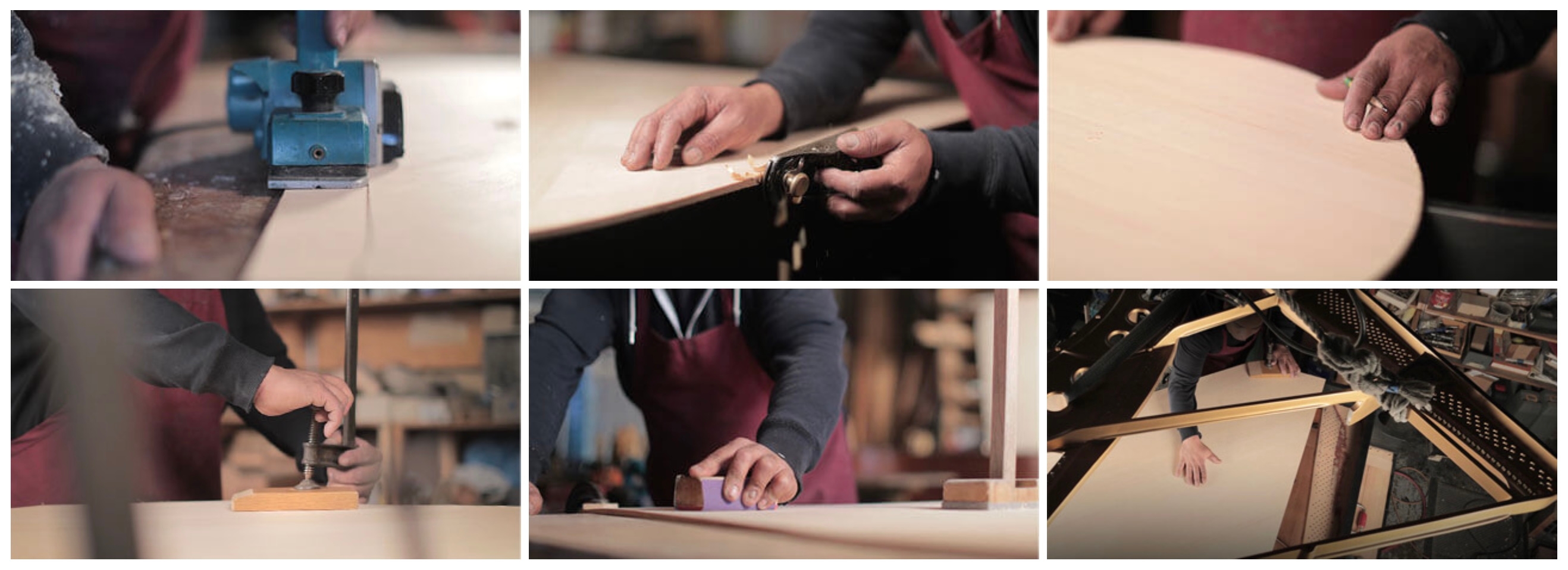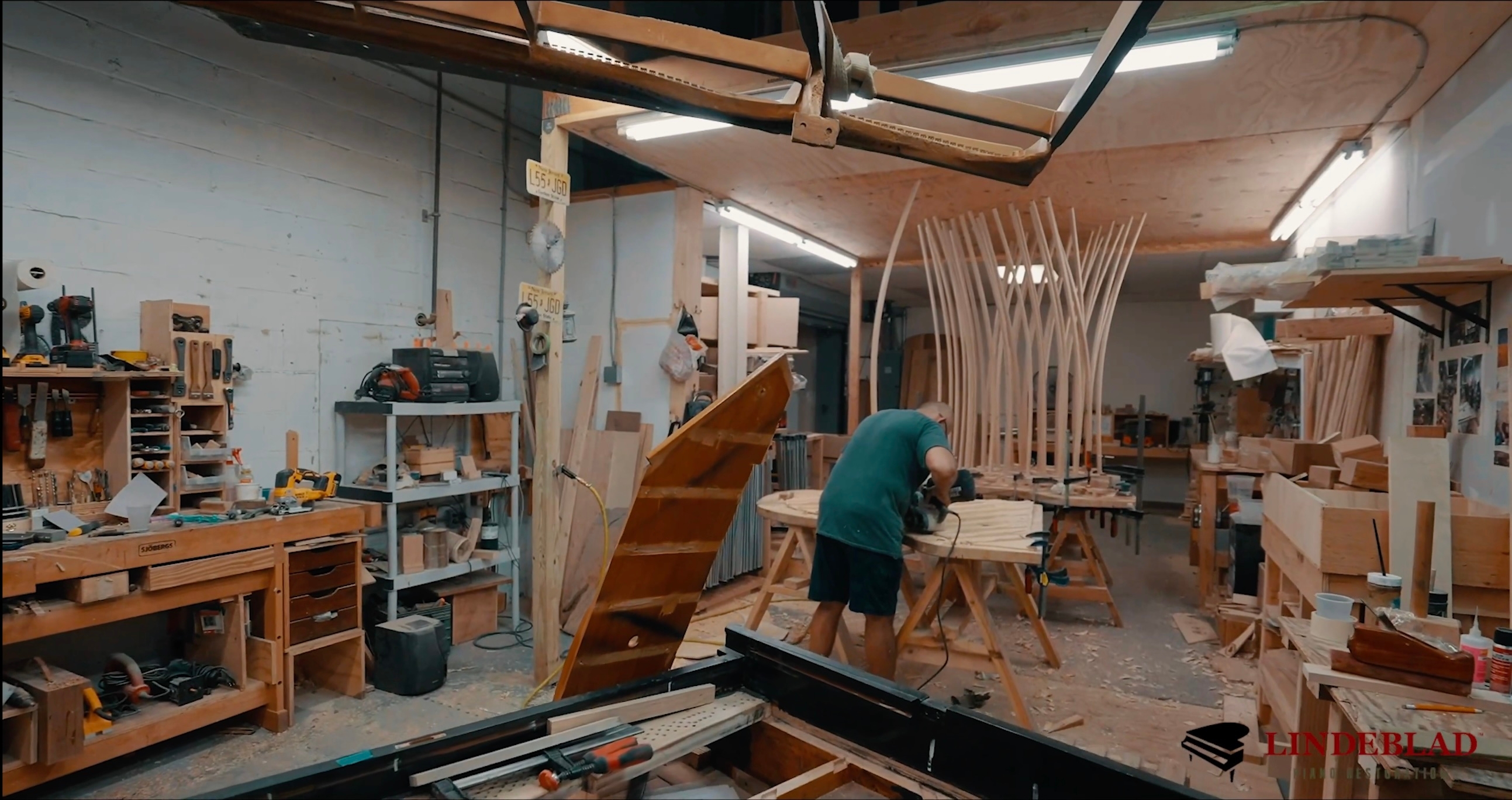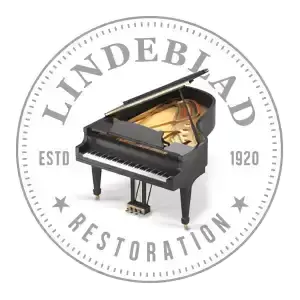As the fourth-generation owner of Lindeblad Piano Restoration, I’ve seen thousands of pianos come through our 25,000 sq ft facility. The most common question I get is about the soundboard – the heart and soul of the piano. When does it need to be replaced? Is it worth the investment? How do you know you’re making the right choice?
This guide will answer all those questions and more. I’ve sat down with our master soundboard craftsman, Galo Torres—who spent 30 years at the Steinway & Sons factory in New York—to give you the definitive guide to piano soundboard replacement.
“For me, the belly work is like you bring the piano back alive. We put the voice in the piano.” - Galo Torres, Lindeblad Master Craftsman
What Is a Piano Soundboard? (And Why It Matters)
The soundboard is a large, thin sheet of wood (typically Sitka spruce) that sits underneath the strings and cast-iron plate. Its job is to amplify the vibrations of the strings, turning them into the rich, resonant sound you hear. Think of it as the piano’s speaker. Without a healthy soundboard, even the finest piano will sound dull, lifeless, and quiet.
7 Signs Your Piano Soundboard Needs Attention
How do you know if your soundboard is failing? Here are the 7 key signs to look and
listen for:
- Loss of Tone & Sustain: The piano sounds “dead” or “flat.” Notes don’t sing the way they used to.
- Buzzing or Rattling Sounds: Unwanted noises, especially when playing certain notes, can indicate cracks or loose ribs.
- Visible Cracks: Large, numerous, or separating cracks are a clear sign of structural issues.
- Loss of Crown: The soundboard should have a slight upward arch, or “crown.” If it has flattened, it can no longer amplify sound effectively.
- Tuning Instability: If your piano won’t hold a tune, a failing soundboard could be the culprit.
- Dull Bass & Weak Treble: The bass notes lack power and the treble notes sound thin.
- Water Damage: Stains or warping from moisture are a major red flag.
Soundboard Repair vs. Replacement: Which Do You Need?
This is the most critical decision. As I often explain to clients, a soundboard is like a battery. When it’s new, it’s at 100% power. Over time, it gradually loses its charge:
- 10 years: 98%
- 50 years: 90%
- 90 years: 70%
- 120+ years: 60% or less
Even with a 100-year-old soundboard, a full restoration of all other parts can bring the piano to 85-90% of its potential. But for that true 100/100, concert-level performance, a new soundboard is the only way.
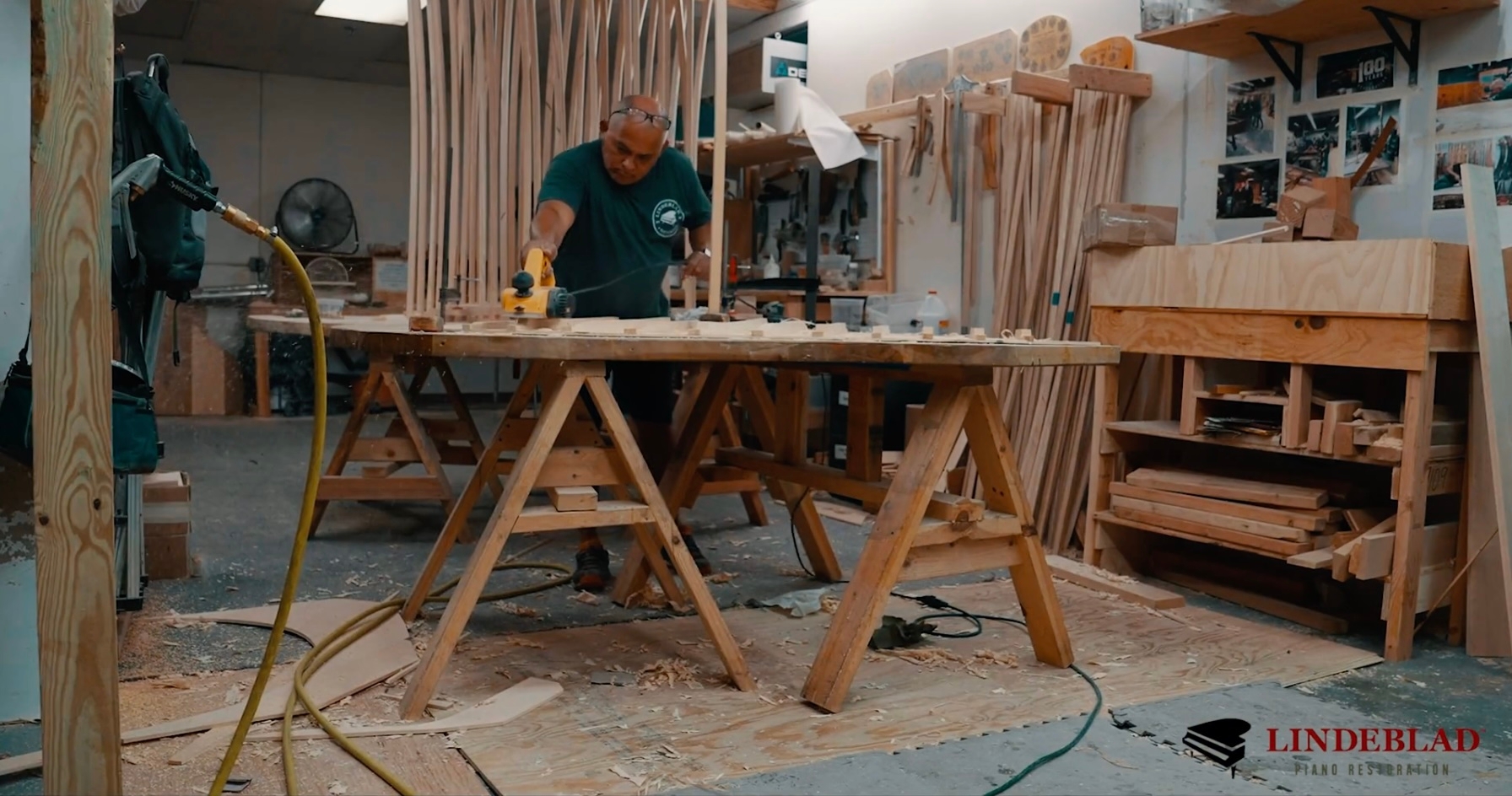
Piano Soundboard Replacement Cost Breakdown
A complete soundboard replacement at Lindeblad Piano typically costs between $8,000 and $10,000.
What drives the cost?
- Piano Size: Larger pianos require more materials and labor.
- Complexity: Unique designs or extensive damage can increase the time required.
- Bridge Work: If the bridges also need to be replaced, this adds to the cost.
This price includes the new soundboard, new bridges, and the expert labor of our bellymen. We offer a 5-year warranty on all new soundboards, matching the Steinway factory warranty.
The Complete Soundboard Replacement Process (Step-by-
Step)
Replacing a soundboard is a 2-week, intensive process that requires complete disassembly of the piano.
Week 1: Deconstruction & Preparation
- Remove Strings & Plate: The 40,000 lbs of string tension is released, and the massive cast-iron plate is carefully lifted out.
- Old Soundboard Removal: The old, failing soundboard is meticulously removed from the piano’s inner rim.
- Cabinet Prep: The inner rim is cleaned and prepared for the new board.
Week 2: Rebirth of the Piano’s Voice
- New Soundboard Construction: A new board is hand-crafted from the finest Alaskan Sitka Spruce, tapered to our Diaphragmatic design.
- Ribs &Bridges: Ribs are installed to create the crown, and new bridges are fitted.
- Installation: The new soundboard is custom-fit and installed into the piano.
- Reassembly: The plate is re-installed, and the piano is restrung.
- Finishing: The piano then moves on to regulation, voicing, and multiple tunings over several weeks.
“It’s like you put your life in this soundboard. If you enjoy your job, you put your life in there.” - Galo Torres
What Makes a Great Soundboard? Materials & Craftsmanship
Not all soundboards are created equal. Three things make a Lindeblad soundboard exceptional:
- The Wood: We use the same premier Alaskan Sitka Spruce from the same supplier as Steinway New York and Steinway Hamburg. It has the perfect stiffness-to-weight ratio for amplifying sound.
- The Design: Our Diaphragmatic Soundboard is thinner at the edges and thicker in the middle, making it more flexible and resonant.
- The Craftsman: Galo Torres is a legend. With 30 years at Steinway, he knows their methods inside and out. He brings that factory-level expertise to every piano we restore.
“A lot of technicians, they got the same materials, but they don’t know how to use those materials. If you bring the piano in Lindeblad, we give you a Steinway, real Steinway.” - Galo Torres
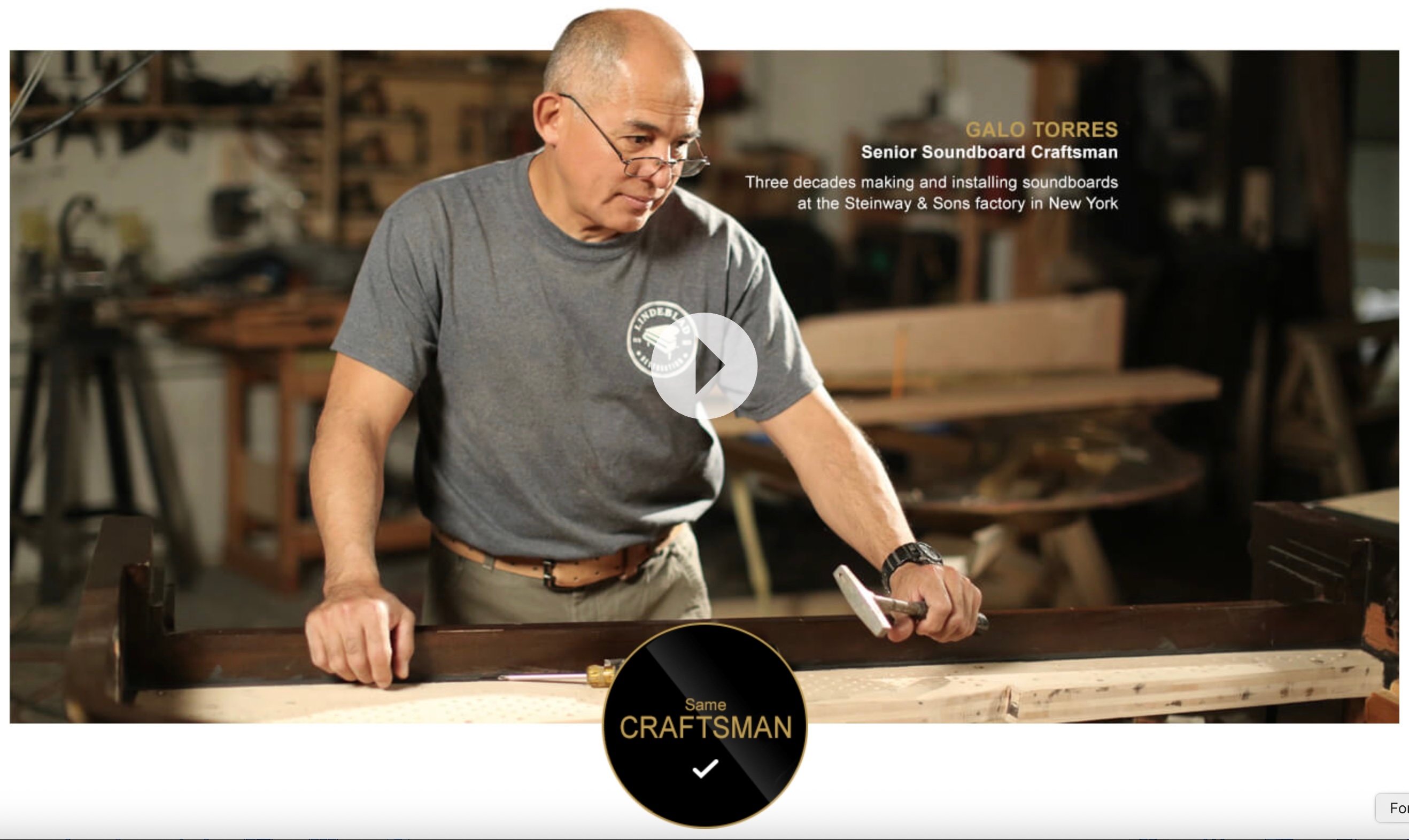
Is Soundboard Replacement Worth It? (Decision Framework)
For a high-quality piano (Steinway, Mason & Hamlin, Baldwin, etc.) that you intend to keep for decades, yes, it is absolutely worth it.
Ask yourself:
- Is this a family heirloom? A new soundboard ensures it can be passed down for generations.
- Are you a serious musician? You will hear and feel the difference in tone and performance.
- What is the piano’s overall value? For a vintage Steinway, a new soundboard is a wise investment that protects its value.
For a lower-quality piano or one with limited sentimental value, the cost may not be justified. In that case, you might consider trading it in for a new or restored piano.
Real Restoration Stories
The Hurricane Maria Piano
We received a 1920 Steinway Grand from Florida that had been through Hurricane Maria. It had rusted-out strings, a seized action, and shattered glass embedded in the case. The soundboard was completely destroyed. Galo and our team performed a complete rebuild, including a new soundboard, pinblock, and action. The result was a concert-ready instrument brought back from the brink. See the full story here.
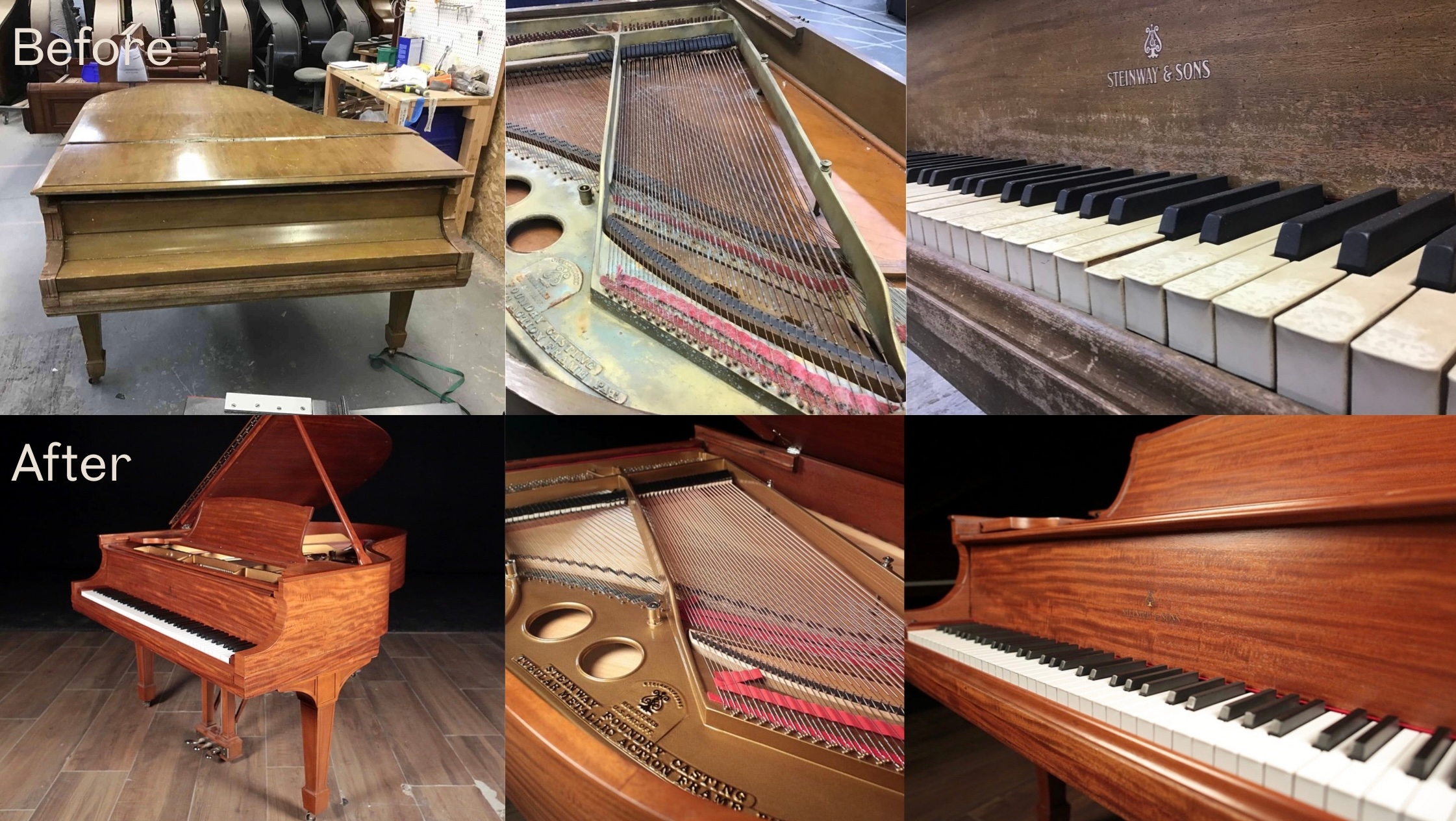
The 1911 Steinway B with 12 Cracks
We restored a 1911 Steinway Model B for Zdenek Kansky, a Berklee College of Music alumni, professional pianist, and piano teacher. His soundboard had 12 cracks, including a critical one under the bridge. The piano sounded weak and buzzed on certain notes. After visiting our facility and meeting our team, Zdenek chose Lindeblad over several other restoration shops. As he told us after his visit:
"It was such a pleasure to meet you all and see how all team works on these piano beauties! That's why I decided to go with you above others. Take your time to do everything right instead of hurry. Quality first!" - Zdenek Kansky, Berklee Alumni & Piano Teacher
The restoration included a new soundboard, bridges, and complete refinishing. When he saw progress photos during the restoration, Zdenek wrote: "The soundboard looks nice. Like that mahogany rim with black finish." The piano was delivered in April 2025, bringing a 114-year-old Steinway back to concert-level performance.
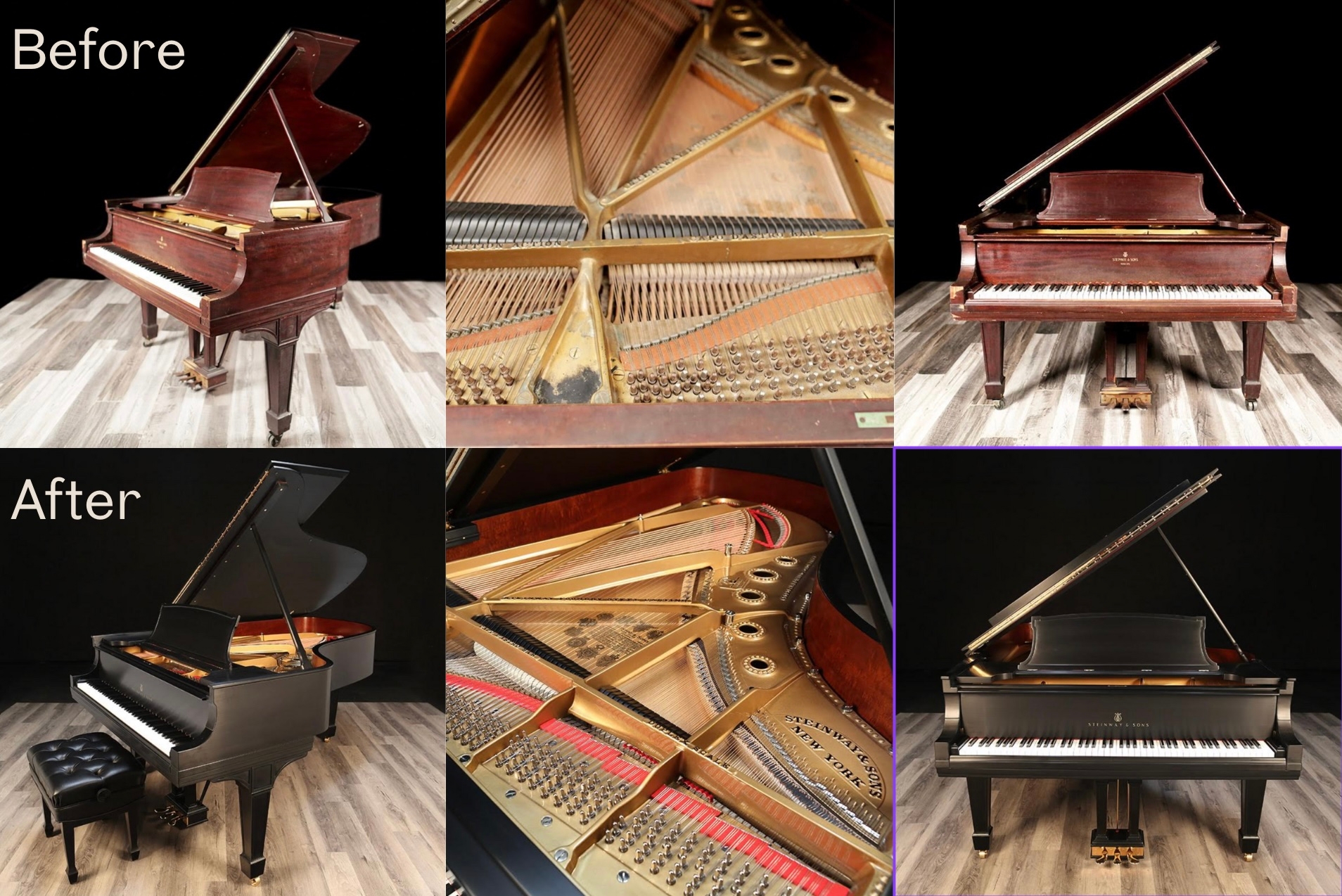
The 1924 Steinway B - A Grammy-Nominated Musician's Journey
Eric Adcock, a three-time Grammy-nominated musician and songwriter from Louisiana, spent years researching piano restoration companies before choosing Lindeblad. As a former high-level piano salesman, Eric understood piano construction intimately. As he explains: "I understand how they're made, I understand the actions, I understand the importance of the soundboard. That information helped me make an informed decision."
Eric purchased a 1924 Steinway Model B that needed extensive restoration, including a complete soundboard replacement. Before committing, he flew to New Jersey with his wife to tour our facility and interview our team. The moment that sold him? Meeting Galo Torres.
"So I walked into the factory and he introduced me to Galo. He's got a big smile on his face. He's got his workshop—it smells like wood. And he couldn't wait to tell me how he builds these soundboards, because he knew what he was doing. Then I found out this guy was the belly man for Steinway restoration process for thirty years. And now he's working for Lindeblad, making these soundboards to the exact standards that Steinway would want in their pianos. I mean, that sold me right there. He's the guy." - Eric Adcock, Grammy-Nominated Musician
After the restoration, Eric was emotional when he first saw and played the piano. "The tone, the resonance, the richness of the sound is unprecedented," he told us. "It sounds like a 1924 Steinway Model B because it IS a 1924 Steinway Model B. There's no doubt about it."
Watch Eric's full video testimonial here.

Your Questions Answered (FAQ)
Q: Will a new soundboard change my piano’s sound? A: Yes, for the better! It will restore the power, sustain, and tonal color the piano had when it was new.
Q: Does replacing the soundboard devalue a vintage piano? A: No. For a performance instrument, a new, expertly installed soundboard increases its value and longevity. A dead soundboard makes a piano virtually worthless as a musical instrument.
Q: How long does a new soundboard last? A: With proper humidity control, a new soundboard will last 80-100+ years.
Q: Can you replace the soundboard on an upright piano? A: Yes, the process is similar and the results are just as dramatic.
Get a Free Soundboard Evaluation
If you’re unsure about your piano’s soundboard, our team can help. We offer free, no-obligation evaluations nationwide. We’ll assess your piano’s condition and give you an honest recommendation on whether to repair, replace, or do nothing.
Call us today at 888-587-4266 or request a free evaluation online. Let us help you bring your piano’s voice back to life.
